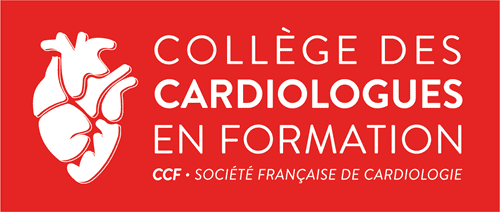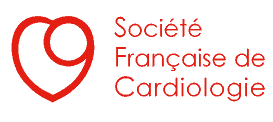Suivez nous sur les réseaux sociaux
Cet outil a vocation à informer, diffuser l’information auprès des jeunes cardiologues (internes, assistants, chefs de cliniques, jeunes praticiens, etc.), et faciliter les échanges.
Voici un aperçu rapide des sujets abordés dans cette publication :
Toutes nos publications
Une question ?
Publications
Machine-learning score to predict in-hospital outcomes in patients Hospitalized in Intensive Cardiac Care Unit
Voici un aperçu rapide des sujets abordés dans cette publication :
Machine-learning score to predict in-hospital outcomes in patients Hospitalized in Intensive Cardiac Care Unit
Orianne Weizman, Kenza Hamzi, Patrick Henry, Guillaume Schurtz, Marie Hauguel-Moreau, Antonin Trimaille, Marc Bedossa, Jean Claude Dib, Sabir Attou, Tanissia Boukertouta, Franck Boccara, Thibaut Pommier, Pascal Lim, Thomas Bochaton, Damien Millischer, Benoit Merat, Fabien Picard, Nissim Grinberg, David Sulman, Bastien Pasdeloup, Yassine El Ouahidi, Treçy Gonçalves, Eric Vicaut, Jean-Guillaume Dillinger, Solenn Toupin, Théo Pezel, on behalf of the ADDICT-ICCU Investigators
European Heart Journal – Digital Health, December 2024, ztae098
DOI: 10.1093/ehjdh/ztae098
Abstract
Aims
Although some scores based on traditional statistical methods are available for risk stratification in patients hospitalized in cardiac intensive care units (CICUs), the interest of machine learning (ML) methods for risk stratification in this field is not well established. We aimed to build an ML model to predict in-hospital major adverse events (MAE) in patients hospitalized in CICU.
Methods and Results
In April 2021, a French national prospective multicentre study involving 39 centres included all consecutive patients admitted to CICU. The primary outcome was in-hospital MAE, including death, resuscitated cardiac arrest, or cardiogenic shock. Using 31 randomly assigned centres as an index cohort (divided into training and testing sets), several ML models were evaluated to predict in-hospital MAE. The eight remaining centres were used as an external validation cohort. Among 1499 consecutive patients included (aged 64 ± 15 years, 70% male), 67 had in-hospital MAE (4.3%). Out of 28 clinical, biological, ECG, and echocardiographic variables, seven were selected to predict MAE in the training set (n = 844). Boosted cost-sensitive C5.0 technique showed the best performance compared with other ML methods [receiver operating characteristic area under the curve (AUROC) = 0.90, precision–recall AUC = 0.57, F1 score = 0.5]. Our ML score showed a better performance than existing scores (AUROC: ML score = 0.90 vs. Thrombolysis In Myocardial Infarction (TIMI) score: 0.56, Global Registry of Acute Coronary Events (GRACE) score: 0.52, Acute Heart Failure (ACUTE-HF) score: 0.65; all P < 0.05). Machine learning score also showed excellent performance in the external cohort (AUROC = 0.88).
Conclusions
This new ML score is the first to demonstrate improved performance in predicting in-hospital outcomes over existing scores in patients admitted to the intensive care unit based on seven simple and rapid clinical and echocardiographic variables.


